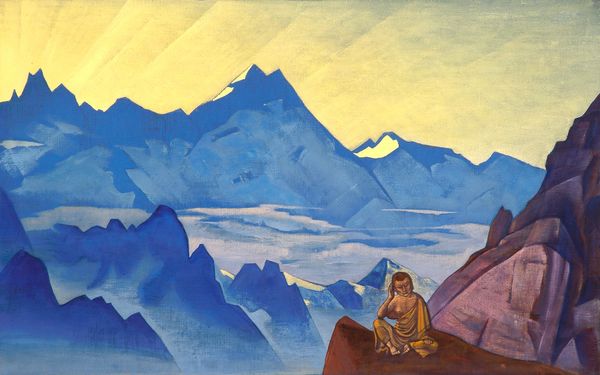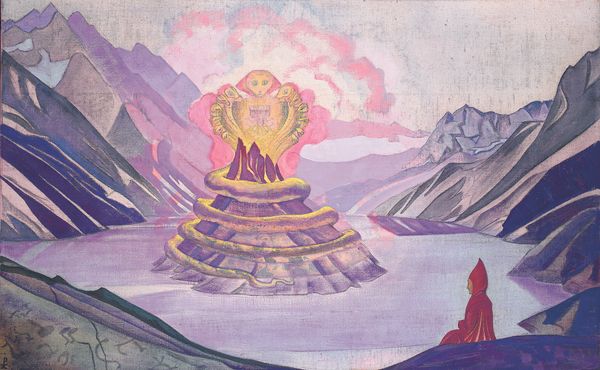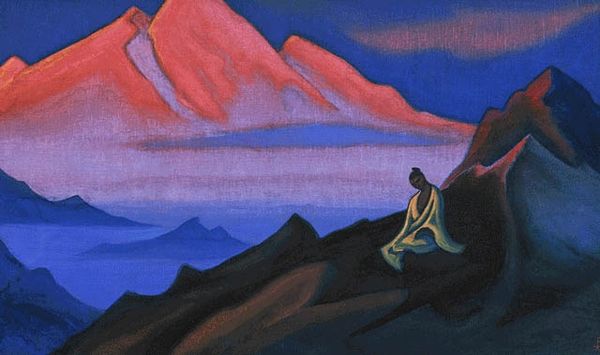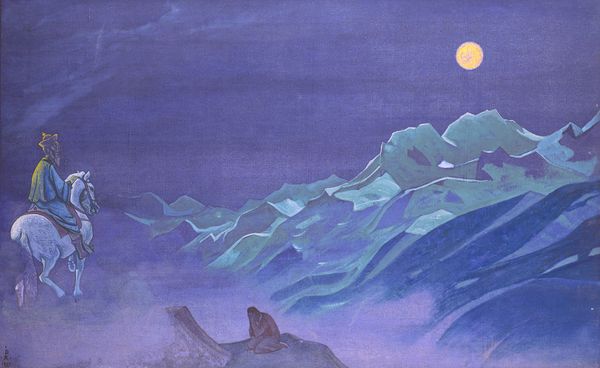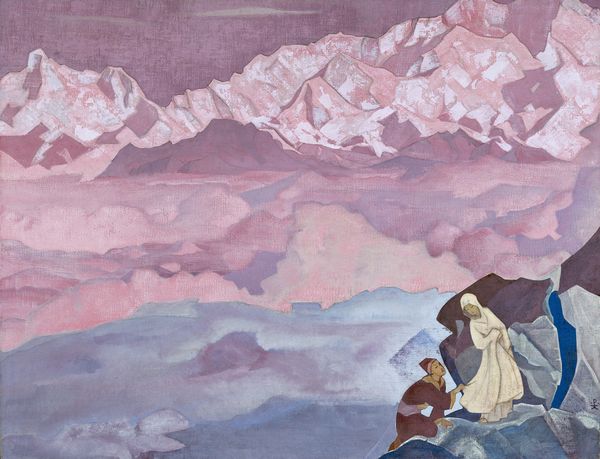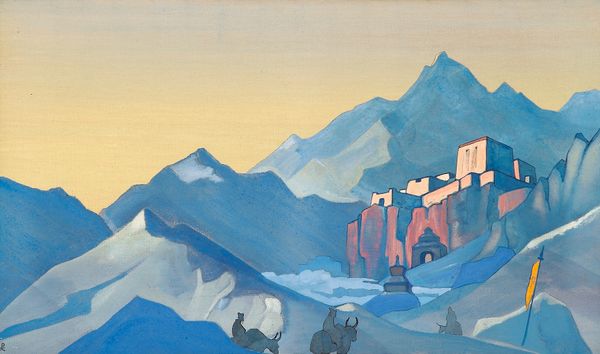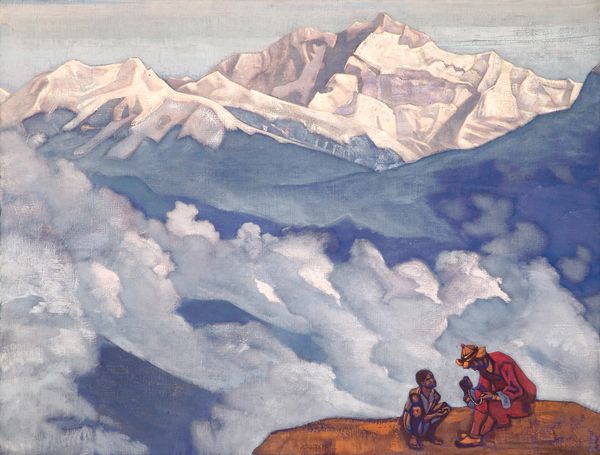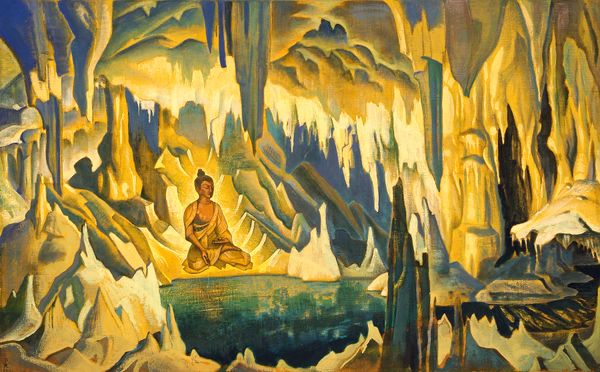
Dimensions: 74 x 117 cm
Copyright: Public domain
Editor: This is Nicholas Roerich's "Padmasambhava," a 1924 watercolor on board currently residing at the Nicholas Roerich Museum. I am struck by how the stylized landscape feels both ancient and somehow, vibrantly modern. What’s your interpretation of this piece? Curator: This work, ostensibly a landscape, resonates powerfully when considered through a postcolonial lens. Roerich, a Western artist depicting a revered figure from Tibetan Buddhism, invites questions about representation and cultural exchange. Consider the political backdrop of 1924: the rise of the Soviet Union, and growing Western fascination with Eastern spiritual traditions. Does this context shift how we perceive the painting's symbolism? Editor: That's a great point, I hadn’t really thought about the global politics of the time. The almost flattened perspective, the simplified forms… how does that fit in? Curator: The simplified forms are deliberate, perhaps mirroring how Western artists were engaging with, and sometimes appropriating, non-Western aesthetics. Consider, too, the symbolism inherent in the image. The landscape isn't just scenery; it's imbued with spiritual significance. How might the mountain, the waterfall, and even the color choices contribute to this sense of layered meaning? Roerich’s esoteric beliefs influenced his art, so the mountains symbolize spiritual aspiration, connecting heaven and earth. Editor: It makes me think about how we frame Eastern spiritualism, in the West. There is this simultaneous romanticizing and othering, sometimes. Curator: Exactly. And Roerich, in placing Padmasambhava within this flattened, stylized landscape, is participating in that very dynamic. It begs us to consider: Whose gaze are we seeing this through? What power dynamics are at play when Eastern spirituality is interpreted and represented by a Western artist? Editor: This has given me a lot to think about, about the responsibility that comes with looking at art that comes from another culture, of understanding all of the complex social, political, and art history. Curator: Indeed. The beauty of this work lies not just in its aesthetic appeal, but also in the questions it provokes about cultural exchange, representation, and the enduring impact of colonialism.
Comments
No comments
Be the first to comment and join the conversation on the ultimate creative platform.

